SUMMARY
VENOM: None
PREVALENCE: Very common
ACTIVE PERIOD: Active during the day
KEY ID FEATURES: Black or dark brown with yellow stripes, stout body, can be variable in color and markings
BEHAVIOR: Generally docile, may squirm, bite and musk if handled
SIZE: Small to Medium - 40 - 65cm
QUICK ASSESSMENT 0-10
GALLERY
IMPORTANT: Many snakes have significant variance in coloration and pattern even within the same species. There can also be extreme differences in appearance from juveniles to adults so it is important to never assume you have properly identified a snake.
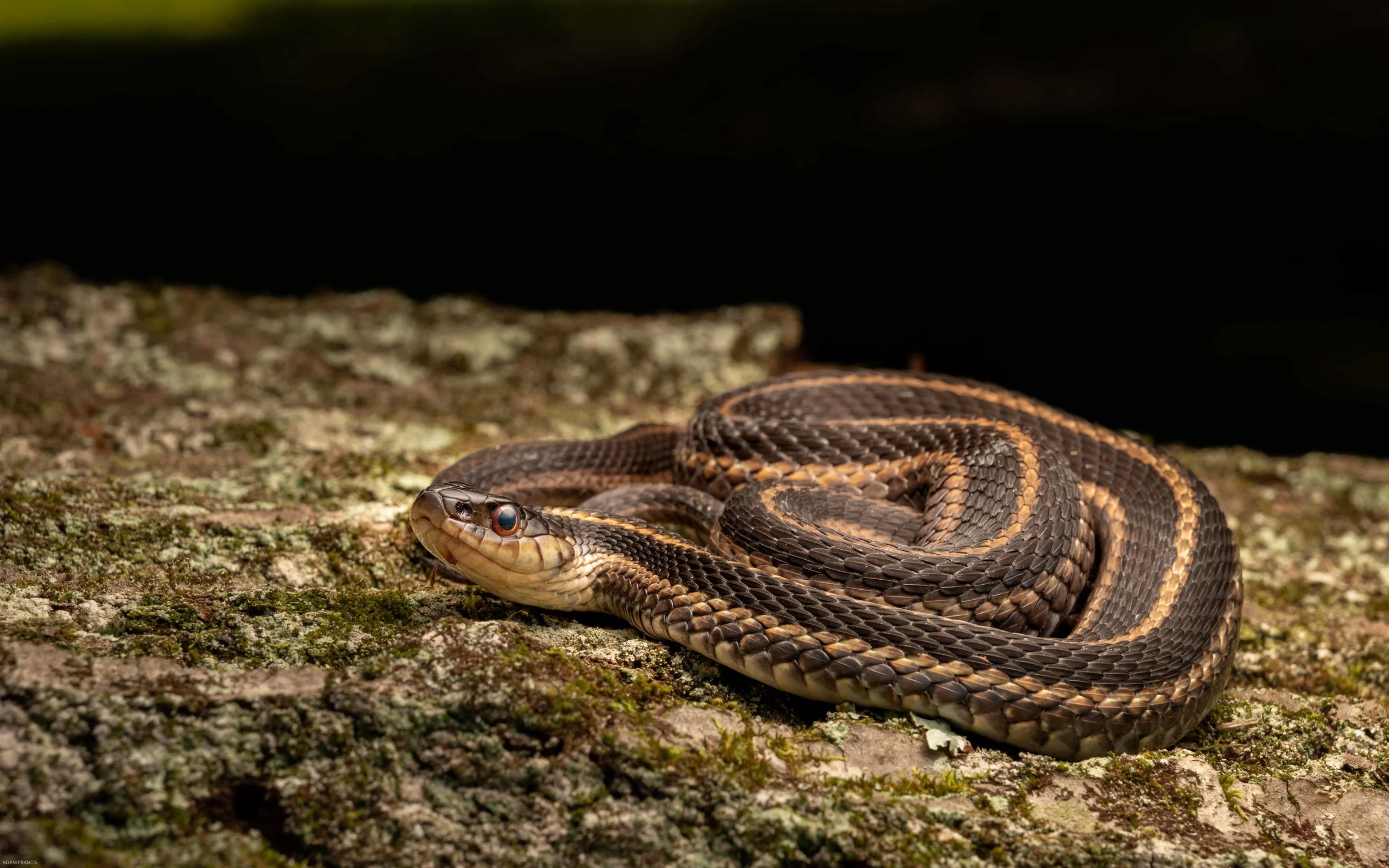
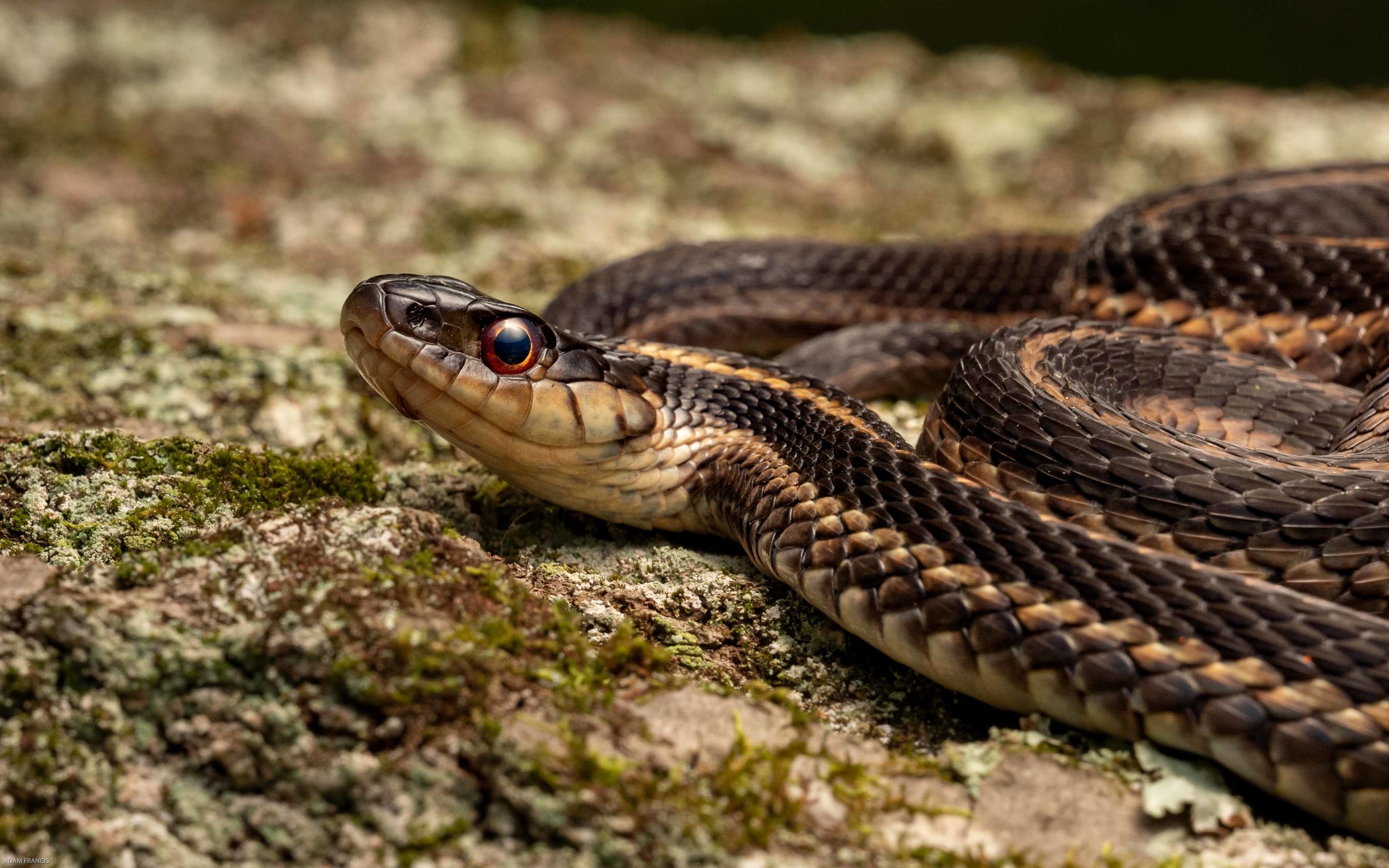
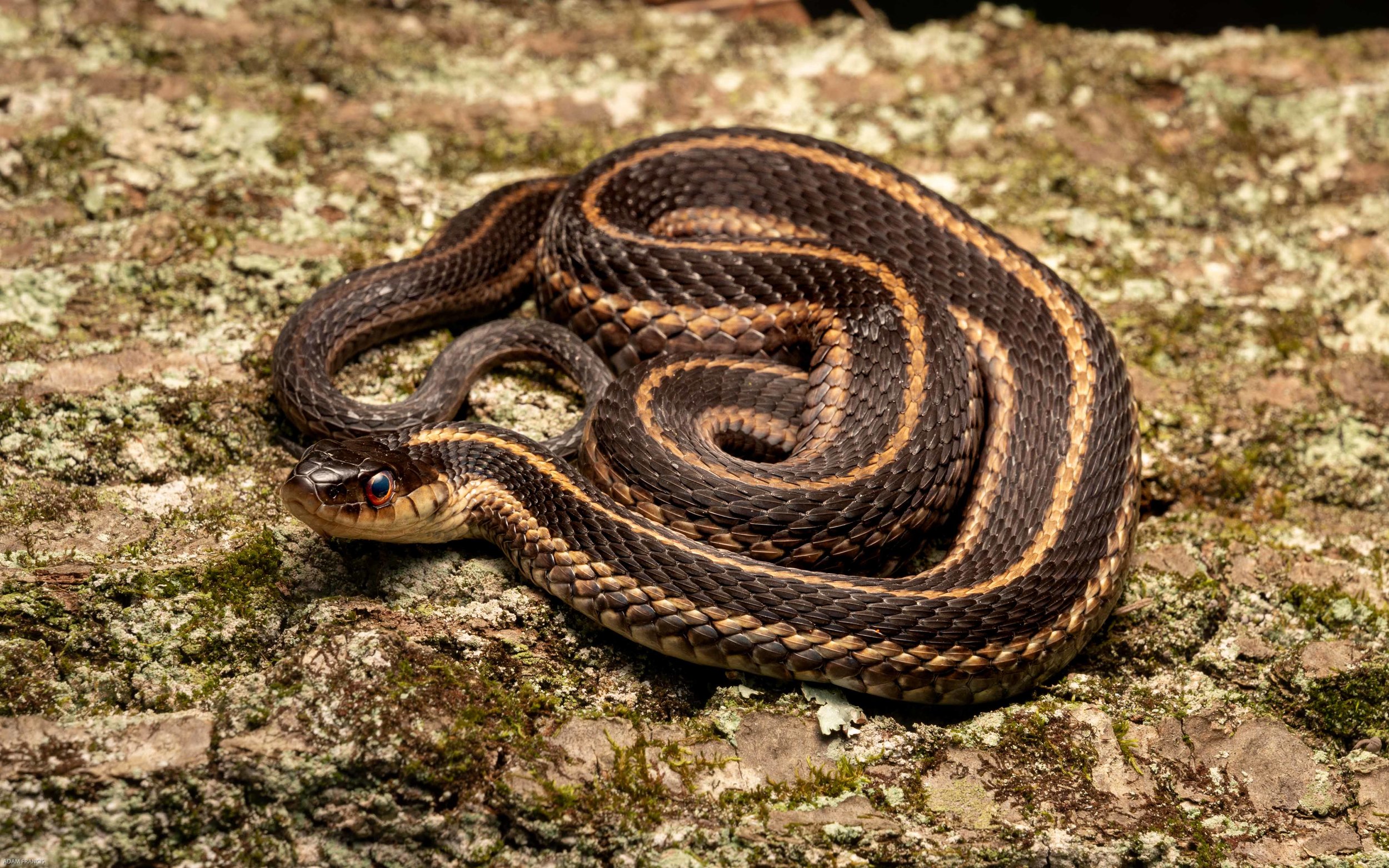
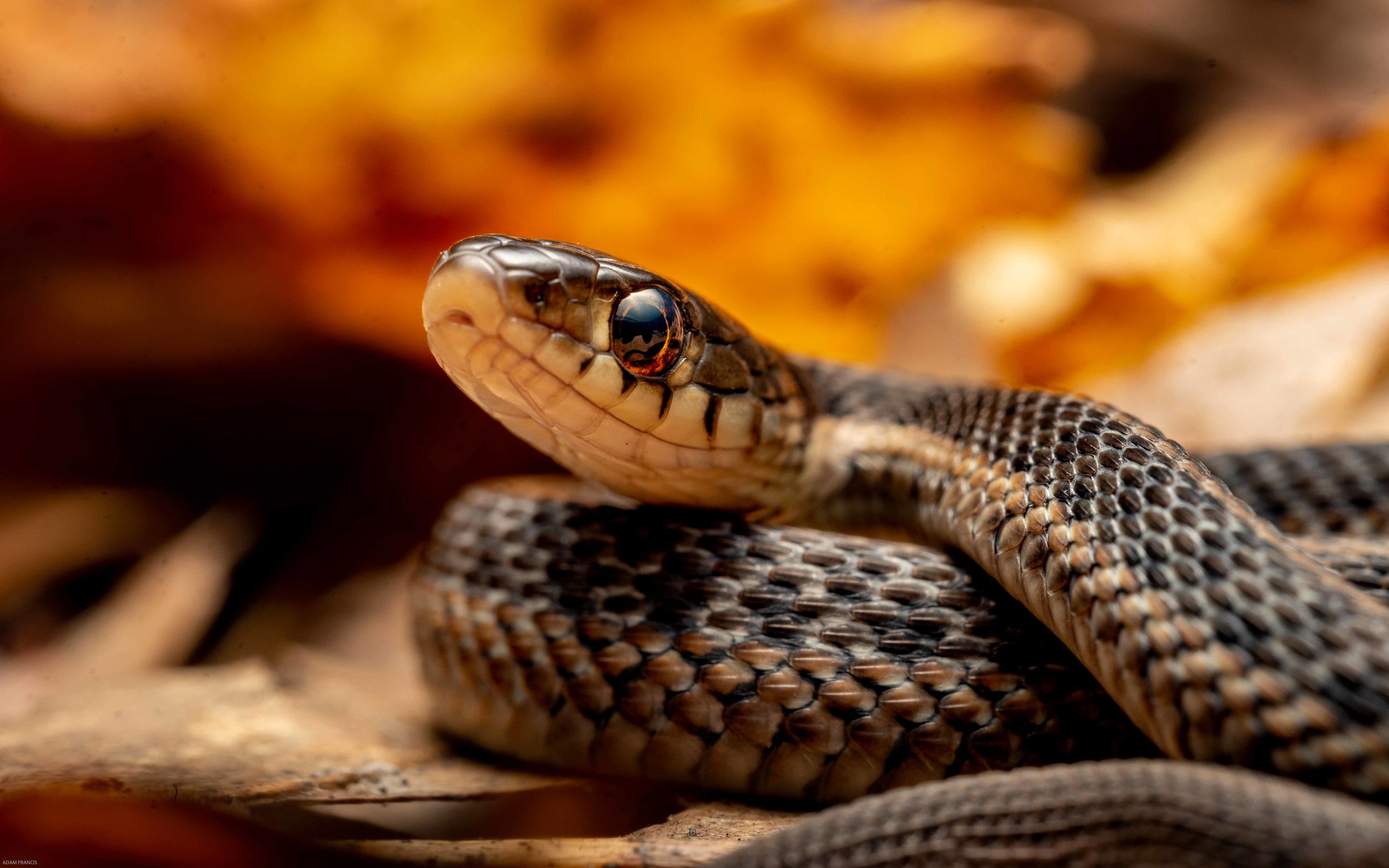
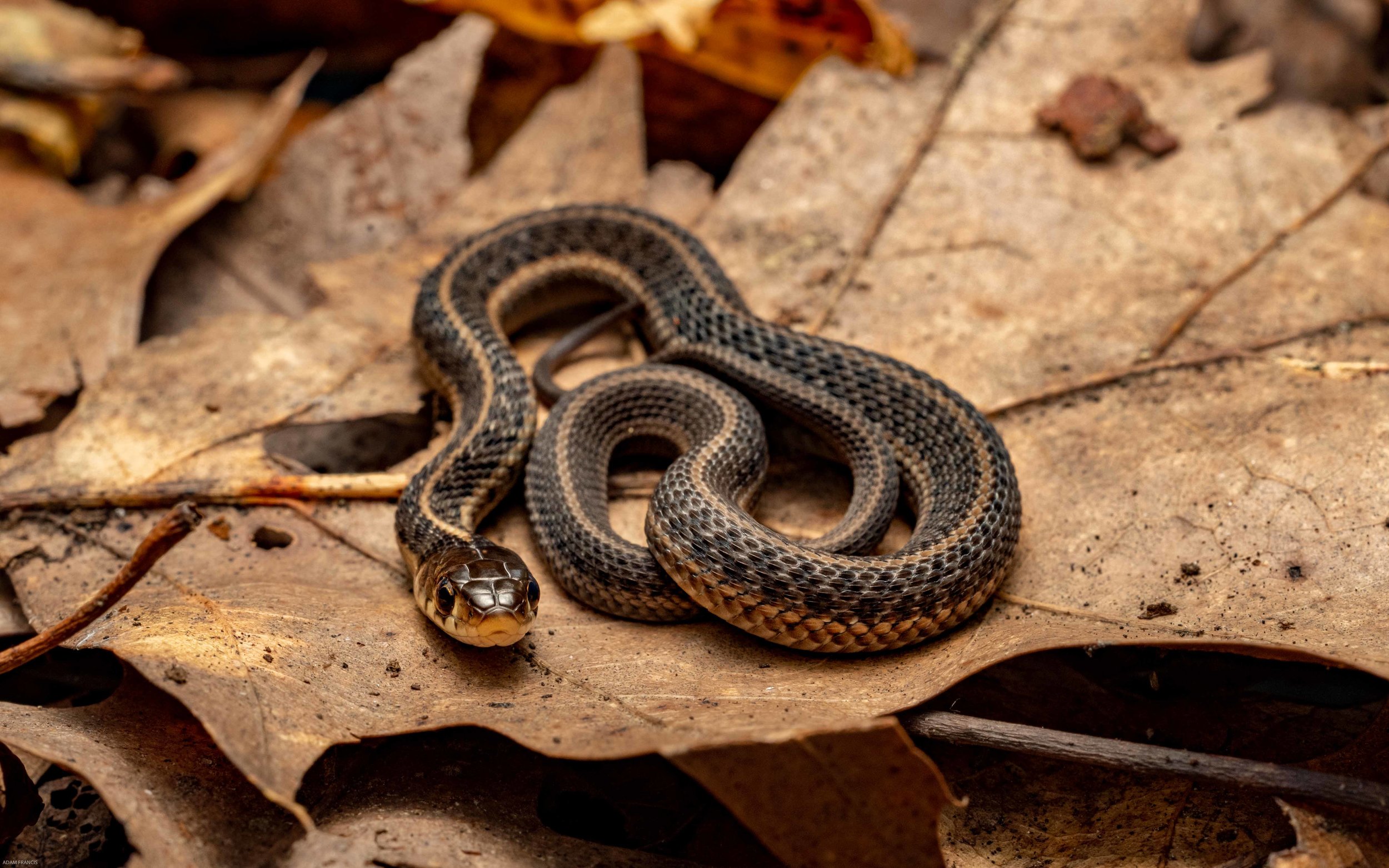
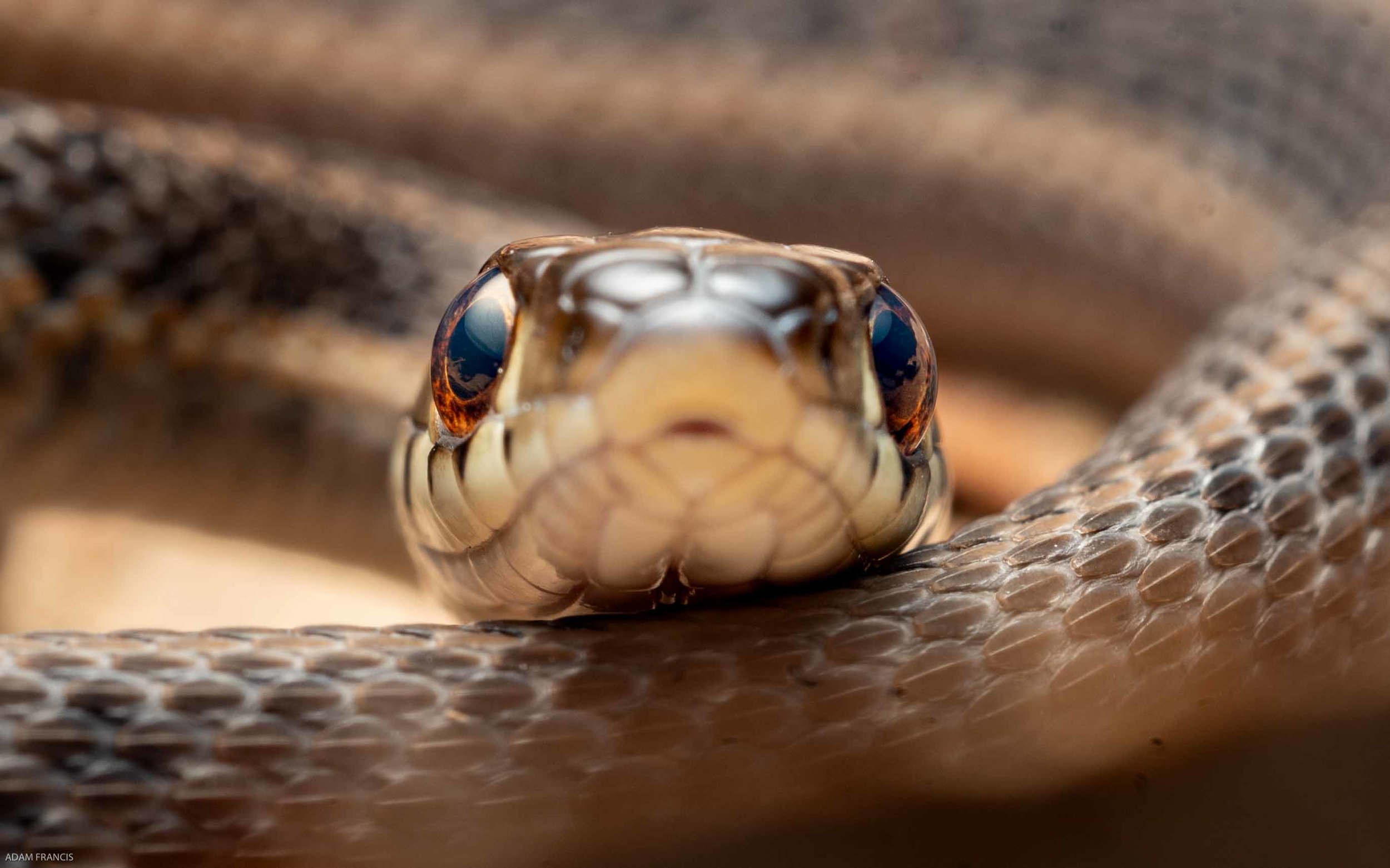
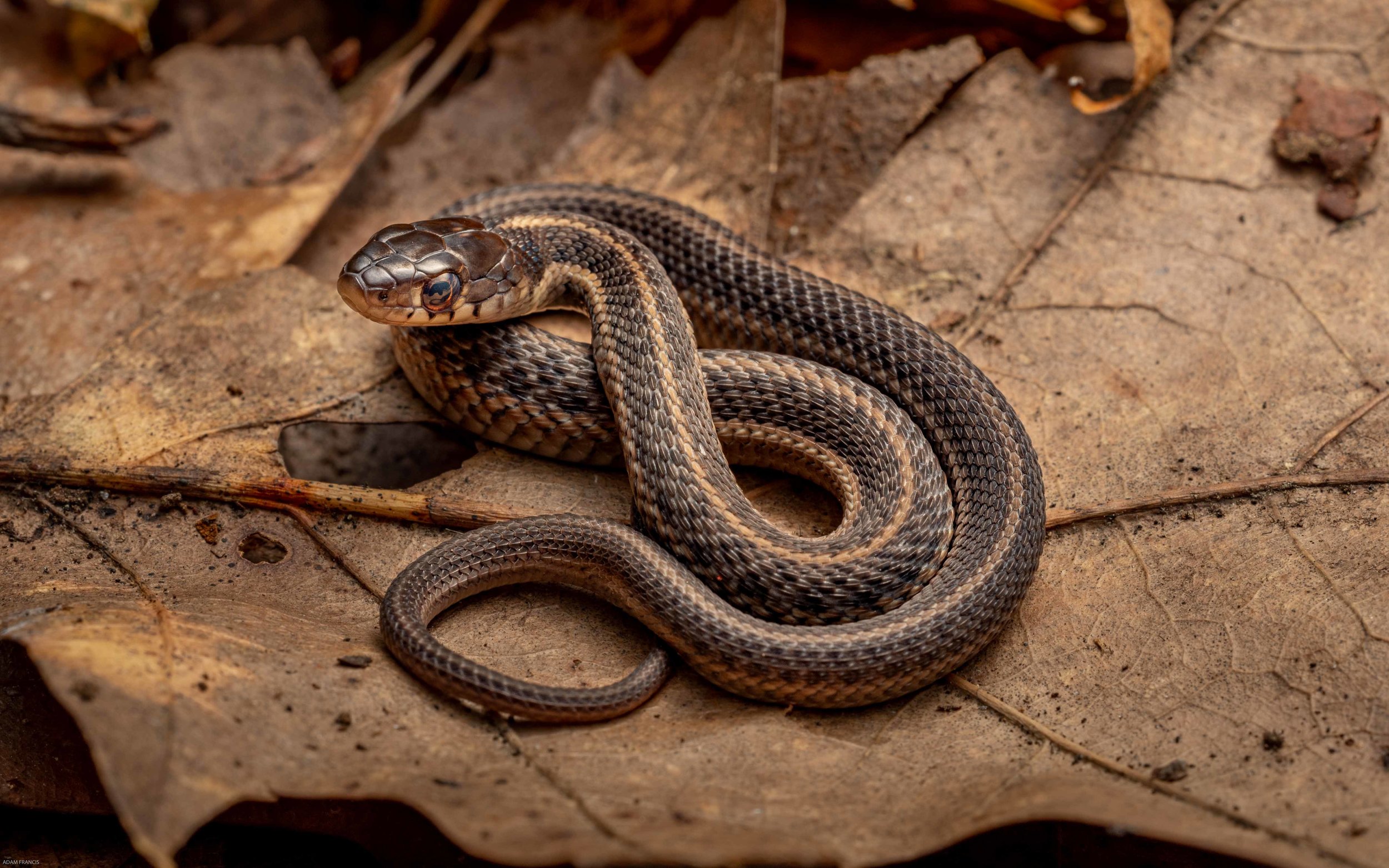
DESCRIPTION
A small to medium sized inoffensive snake, the Common Garter Snake is one of the most common species across its geographical range. Often black or dark brown with yellow stripes and belly scales with black lined scales on its jaw line. Large scales on the head relative to its size and uniform, heavily keeled scales on the body. They can be highly variable in color and pattern. This is a nonvenomous species.
BEHAVIOR
A diurnal snake, Common Garter’s can be found out during the day, warming up on forest edges, rocks and logs during the morning and out on the hunt thereafter. Generally docile but will flee if approach and are capable f biting and musking if handled. They give birth to live young in large numbers, sometimes exceeding 30-40 babies. They can handle warm and very cold temperatures relative to other snakes, which is likely a factor as to why they are so successful across North America. They feed on things like worms, frogs, toads and aquatic prey like small fish and tadpoles.
HABITAT
Often found in wooded areas at both low and medium elevation but can also be found in populated areas. Given their varied prey they can be found near water and or dry forest.
MISTAKEN IDENTITY
NO SNAKE SHOULD EVER BE HANDLED BY ANYONE BUT EXPERTS: Often confused with Ribbon Snakes, but generally mistaken for venomous species. Regardless, it should be noted that small snakes can be particularly dangerous due to difficulty in properly identifying them and difficulty handling them. As such they should never be handled or approached.

